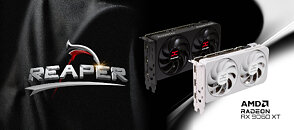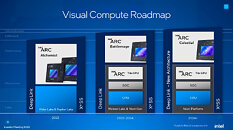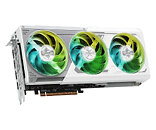EMTEK's MIRACLE WHITE Card Lineup Expands Again, with GeForce RTX 5060 Ti 16 & 8 GB Options
EMTEK, a South Korean manufacturer, has quietly added two new SKUs to its current-gen MIRACLE WHITE D7 graphics card series. As of late last week, their custom GeForce RTX 5060 Ti 16 GB and 8 GB models have turned up for sale at domestic e-tail outlets. The higher capacity option starts off at 725,900 KRW (~$535 USD), while its slightly cheaper sibling demands at least 639,660 KRW (~$472 USD). As covered on TechPowerUp in the recent past, EMTEK products are not well known properties in the West—due to regional retail exclusivity.
Unsurprisingly, the latest MIRACLE WHITE cards carry the same overall visual theme as slightly older offerings. Unlike the slightly larger GeForce RTX 5070 D7 12 GB SKU, EMTEK has readied a slimmer 2-slot thick cooling solution (versus 2.5) with no integrated lighting zones. Promotional renders show a triple-fan array and relatively substantial heatsink tempering a (not white) stubby custom PCB. Gigabyte pulled off something similar on a GB206 "Blackwell" GPU-based EAGLE model, albeit with only one fan positioned over crucial hardware. As per usual (for this series), the GeForce RTX 5060 Ti MIRACLE WHITE D7 models utilize NVIDIA's reference specifications.
Unsurprisingly, the latest MIRACLE WHITE cards carry the same overall visual theme as slightly older offerings. Unlike the slightly larger GeForce RTX 5070 D7 12 GB SKU, EMTEK has readied a slimmer 2-slot thick cooling solution (versus 2.5) with no integrated lighting zones. Promotional renders show a triple-fan array and relatively substantial heatsink tempering a (not white) stubby custom PCB. Gigabyte pulled off something similar on a GB206 "Blackwell" GPU-based EAGLE model, albeit with only one fan positioned over crucial hardware. As per usual (for this series), the GeForce RTX 5060 Ti MIRACLE WHITE D7 models utilize NVIDIA's reference specifications.







































































































